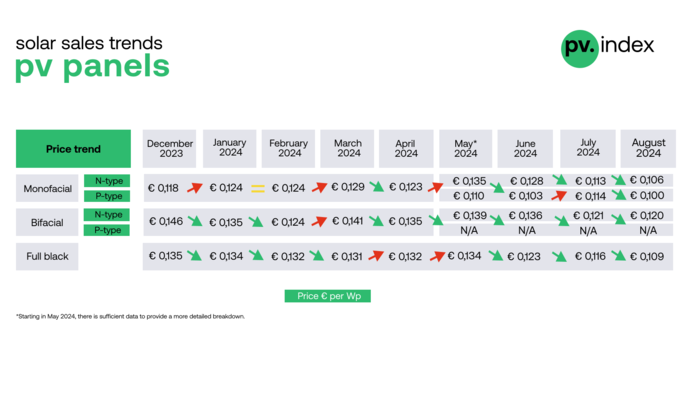Together with the company M10 Industries, the Fraunhofer Institute for Solar Energy Systems (ISE) has developed a new concept for connecting silicon solar cells and a new stringer for the production of shingle modules. In this process, the solar cells are no longer placed next to each other. Instead, they are arranged to slightly overlap, similar to the roofing shingles of houses.
Cell connection with adhesive
The cells are connected into strings using electrically conductive adhesives, which allows a complete avoidance of lead. In this way, the efficiency of the module increases without having to increase the cell efficiency. This is because the currents of the solar cell strings are even smaller than with half-cell modules. In addition, the busbars of the solar cells are covered with active cell surface and no gaps remain between the solar cells of a string.
More efficient than normal half-cell modules
The matrix shingle concept developed by Fraunhofer ISE goes one step further. The shingled solar cells are additionally staggered. This allows full, homogeneous coverage of the entire module surface. Modules produced using this technology thus achieve two to six per cent higher efficiency than conventional half-cell modules with wire interconnection.
Suitable for BIPV
In addition, the shingle modules are more tolerant of partial shading, as the researchers at Fraunhofer ISE point out. This is because electricity can flow around the shaded areas due to the special arrangement of the cells. Thus, depending on the situation of partial shading, the module can achieve twice the output of conventional interconnected modules.
See also: Glass facades that generate solar power
This makes these modules particularly suitable for building facades where partial shading is common, emphasises Achim Kraft, Group Manager Interconnection Technology at Fraunhofer ISE. "Especially there, maximum space utilisation, shading tolerance and appealing aesthetics are important," he says.
New machine concept implemented
The company M10 Industries developed a stringer for Fraunhofer ISE's technology approach that enables the production of matrix shingle modules on an industrial scale. "The matrix approach allowed us to implement a completely new machine concept," says Phillipp Zahn, board member of M10 Industries. "Our system thus has a much higher throughput than classic shingle stringers and is thus on par with conventional stringers in terms of megawatt output," he explains.
12,000 cells per hour interconnected
With the stringer solution from M10 Industries, up to 12,000 shingle cells can be connected per hour in a fully automated process, according to the company. The system can also be easily integrated into conventional production lines for solar modules and connects the solar cells completely without lead. The first prototype was put into operation in Freiburg, Germany after only seven months of development and is awaiting further tests.
Fraunhofer ISE is currently presenting its matrix shingle modules at The smarter E Europe in Munich in Hall A6 at Stand 370. There, the researchers will also show green and blue shingle modules to demonstrate their applicability to building-integrated photovoltaics. (su/mfo)







